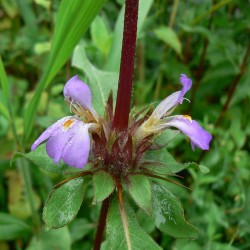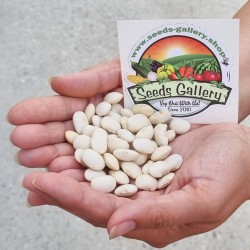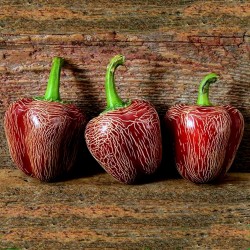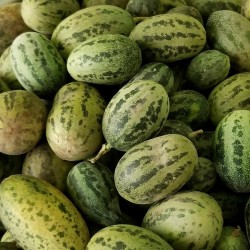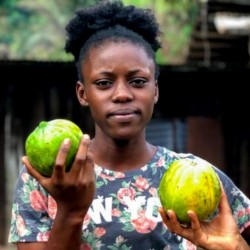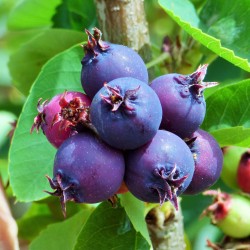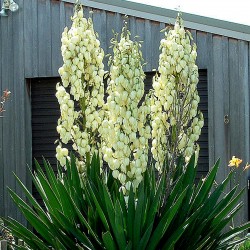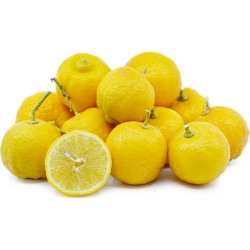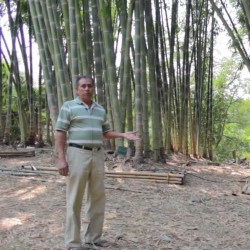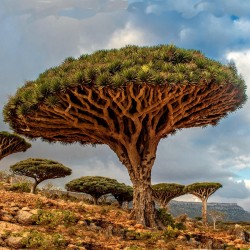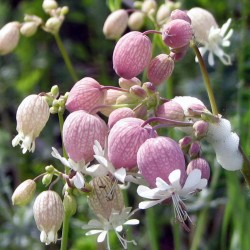
This plant is medicinal plant
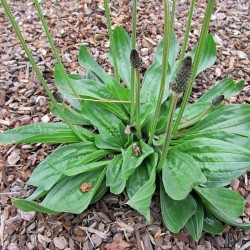
Ribwort plantain, English...
Price
€1.25
SKU: VE 216
Seeds Gallery Com,
5/
5
<h2><strong>Ribwort plantain, English plantain Seeds (Plantago lanceolata)</strong></h2>
<h2><span style="color: #f80000;" class=""><strong>Price for Package of 560 (1g) seeds.</strong></span></h2>
<p style="color: #202122; font-size: 14px;" class=""><i><b>Plantago lanceolata</b></i><span> </span>is a species of<span> </span>flowering plant<span> </span>in the plantain family<span> </span>Plantaginaceae. It is known by the common names<span> </span><b>ribwort plantain</b>,<sup id="cite_ref-BSBI07_1-0" class="reference" style="font-size: 11.2px;"></sup><span> </span><b>narrowleaf plantain</b>,<sup id="cite_ref-2" class="reference" style="font-size: 11.2px;"></sup><span> </span><b>English plantain</b>,<sup id="cite_ref-3" class="reference" style="font-size: 11.2px;"></sup><span> </span><b>ribleaf</b>,<span> </span><b>lamb's tongue</b>, and<span> </span><b>buckhorn</b>.<sup id="cite_ref-4" class="reference" style="font-size: 11.2px;"></sup><span> </span>It is a common<span> </span>weed<span> </span>on cultivated or disturbed land.<br><br><span>The plant is a </span>rosette<span>-forming </span>perennial<span> </span>herb<span>, with leafless, silky, hairy </span>flower<span> stems (10–40 cm or 3.9–15.7 in). The basal leaves are </span>lanceolate<span> spreading or erect, scarcely toothed with 3-5 strong parallel veins narrowed to a short </span>petiole<span>. The flower stalk is deeply furrowed, ending in an ovoid inflorescence of many small flowers each with a pointed bract. </span><sup id="cite_ref-Blamey_5-0" class="reference" style="font-size: 11.2px;">[5]</sup><sup class="reference" style="font-size: 11.2px;">:<span>248</span></sup><span> Each inflorescence can produce up to two hundred seeds. Flowers are 4 millimetres (0.16 in) (</span>calyx<span> green, </span>corolla<span> brownish), 4 bent back lobes with brown midribs and long white stamens. It is native to temperate Eurasia, widespread throughout the </span>British Isles<span>, but scarce on the most acidic soils (</span>pH<span> < 4.5). It is present and widespread in the Americas and Australia as an </span>introduced species<span>.</span></p>
<i style="color: #202122; font-size: 14px;">Plantago lanceolata</i><span style="color: #202122; font-size: 14px;"><span> </span>is native to Eurasia, but has been introduced to North America and many other parts of the world with suitable habitats.</span><br><br><span style="color: #202122; font-size: 14px;">Considered to be an indicator of agriculture in<span> </span></span>pollen<span style="color: #202122; font-size: 14px;"><span> </span>diagrams,<span> </span></span><i style="color: #202122; font-size: 14px;">P. lanceolata</i><span style="color: #202122; font-size: 14px;"><span> </span>has been found in western<span> </span></span>Norway<span style="color: #202122; font-size: 14px;"><span> </span>from the Early<span> </span></span>Neolithic<span style="color: #202122; font-size: 14px;"><span> </span>onwards, which is considered an indicator of grazing in that area at the time.</span><sup id="cite_ref-7" class="reference" style="color: #202122; font-size: 11.2px;">[7]</sup><span style="color: #202122; font-size: 14px;"><span> </span>This would make sense, as<span> </span></span><i style="color: #202122; font-size: 14px;">P. lanceolata</i><span style="color: #202122; font-size: 14px;"><span> </span>thrives in open fields where livestock are frequently disturbing the ground.</span><br><br>
<h2 style="color: #000000; font-size: 1.5em;"><span class="mw-headline" id="Uses">Uses</span></h2>
<p style="color: #202122; font-size: 14px;"><i>Plantago lanceolata</i><span> </span>is used frequently in<span> </span>herbal teas<span> </span>and other<span> </span>herbal remedies.<sup id="cite_ref-8" class="reference" style="font-size: 11.2px;">[8]</sup><span> </span>A tea from the leaves is used as a cough medicine. In the traditional Austrian medicine<span> </span><i>Plantago lanceolata</i><span> </span>leaves have been used internally (as syrup or tea) or externally (fresh leaves) for treatment of disorders of the respiratory tract, skin, insect bites, and infections.<sup id="cite_ref-9" class="reference" style="font-size: 11.2px;">[9]</sup><span> </span>The leaves can be eaten when very young.<sup id="cite_ref-10" class="reference" style="font-size: 11.2px;"></sup></p>
<p style="color: #202122; font-size: 14px;">Songbirds eat the seeds, and the leaves are eaten by rabbits.<sup id="cite_ref-11" class="reference" style="font-size: 11.2px;"></sup></p>
<h2 style="color: #000000; font-size: 1.5em;"><span class="mw-headline" id="Chemistry">Chemistry</span></h2>
<p style="color: #202122; font-size: 14px;"><i>Plantago lanceolata</i><span> </span>contains<span> </span>phenylethanoids<span> </span>such as<span> </span>acteoside<span> </span>(verbascoside), cistanoside F, lavandulifolioside, plantamajoside and isoacteoside.<sup id="cite_ref-12" class="reference" style="font-size: 11.2px;">[12]</sup><span> </span>It also contains the iridoid glycosides<span> </span>aucubin<span> </span>and<span> </span>catalpol.<sup id="cite_ref-13" class="reference" style="font-size: 11.2px;">[13]</sup><span> </span>These iridoid glycosides make the plant inedible to some herbivores, but others are unperturbed by them--for example, the buckeye butterfly<span> </span><i>Junonia coenia</i>, whose larvae eat the leaves of<span> </span><i>P. lanceolata</i><span> </span>and ingest the iridoid glycosides to make themselves unpalatable to predators.</p>
<h2 style="color: #000000; font-size: 1.5em;"><span class="mw-headline" id="Habitat">Habitat</span></h2>
<p style="color: #202122; font-size: 14px;"><i>Plantago lanceolata</i><span> </span>can live anywhere from very dry meadows to places similar to a rain forest,<sup id="cite_ref-:0_14-0" class="reference" style="font-size: 11.2px;">[14]</sup><span> </span>but it does best in open, disturbed areas. It is therefore common near roadsides where other plants cannot flourish; it grows tall if it can do so, but in frequently-mowed areas it adopts a flat growth habit instead. Historically, the plant has thrived in areas where ungulates graze and turn up the earth with their hooves.</p>
<h2 style="color: #000000; font-size: 1.5em;"><span class="mw-headline" id="Reproduction">Reproduction</span></h2>
<p style="color: #202122; font-size: 14px;">The mode of reproduction can vary among populations of<span> </span><i>P. lanceolata</i>.<sup id="cite_ref-Jousimo,_Jussi_2014_15-0" class="reference" style="font-size: 11.2px;">[15]</sup><span> </span>Reproduction occurs sexually, with the pollen being wind dispersed for the most part, though the plant is occasionally pollinated by bees.<sup id="cite_ref-Jousimo,_Jussi_2014_15-1" class="reference" style="font-size: 11.2px;">[15]</sup><span> </span><i>P. lanceolata</i><span> </span>cannot<span> </span>reproduce asexually<span> </span>in the way that many other species of<span> </span><i>Plantago</i><span> </span>can; instead, it is an obligate<span> </span>outcrosser.</p>
<h2 style="color: #000000; font-size: 1.5em;"><span class="mw-headline" id="Enemies">Enemies</span></h2>
<h3 style="color: #000000; font-size: 1.2em;"><span class="mw-headline" id="Insect_predation">Insect predation</span></h3>
<p style="color: #202122; font-size: 14px;"><i>Plantago lanceolata</i><span> </span>is host to many different species of the order<span> </span>Lepidoptera. Species such as<span> </span><i>Junonia coenia,<span> </span>Spilosoma congrua,</i><span> </span>and<span> </span><i>Melitaea cinxia</i><span> </span>lay their eggs on<span> </span><i>P. lanceolata</i><span> </span>plants so they can serve as a food source for the larvae when they hatch.<sup id="cite_ref-16" class="reference" style="font-size: 11.2px;">[16]</sup><sup id="cite_ref-17" class="reference" style="font-size: 11.2px;">[17]</sup><span> </span>The iridoid glycosides in the plant leaves accumulate in the caterpillars and make them unpalatable to predators.</p>
<h3 style="color: #000000; font-size: 1.2em;"><span class="mw-headline" id="Infection_by_powdery_mildew">Infection by powdery mildew</span></h3>
<p style="color: #202122; font-size: 14px;"><i>Podosphaera plantaginis</i><span> </span>is a powdery mildew fungus that infects<span> </span><i>P. lanceolata</i>. All of the<span> </span><i>P. lanceolata</i><span> </span>populations are infected by several strains of this powdery mildew fungus.<sup id="cite_ref-18" class="reference" style="font-size: 11.2px;">[18]</sup><span> </span>Once the populations are infected, the symptoms are minimal at first. Then, after a few weeks or months lesions start to appear covering the entire surface of the leaves and the stem, making it very noticeable.<sup id="cite_ref-:0_14-1" class="reference" style="font-size: 11.2px;">[14]</sup><span> </span>Another species that infects<span> </span><i>P. lanceolata</i><span> </span>is<span> </span><i>Golovinomyces sordidus</i>. Both of these mildews are obligate<span> </span>biotrophs, meaning that they can only infect living tissue. They cover the surface of the leaves and extend<span> </span>hyphae<span> </span>into the cell matrix in order to extract nutrients.</p>
<h4 style="color: #000000; font-size: 14px;"><span class="mw-headline" id="Resistance_to_powdery_mildew">Resistance to powdery mildew</span></h4>
<p style="color: #202122; font-size: 14px;">After the populations are infected, they react in different ways. Some populations of<span> </span><i>P. lanceolata</i><span> </span>are more susceptible to different strains of powdery mildew. Also, some populations have multiple resistance phenotypes where on the other hand, others may only have one resistance phenotype.<sup id="cite_ref-:0_14-2" class="reference" style="font-size: 11.2px;">[14]</sup><span> </span>Overall, the populations that have the highest variety of resistance phenotypes will have the highest survival rates particularly when rates of infection are high.<sup id="cite_ref-:0_14-3" class="reference" style="font-size: 11.2px;"></sup></p>
<h2 style="color: #000000; font-size: 1.5em;"><span class="mw-headline" id="In_popular_culture">In popular culture</span></h2>
<p style="color: #202122; font-size: 14px;">In the UK and Ireland the plant is used by children to play various simple games. In Edinburgh, Scotland this game is called ‘The 1 o’clock gun’ after the gun that fires everyday from Edinburgh Castle. Writer Sean Michael Wilson notes that: "When I was a kid in Edinburgh we used it for a cute wee game called ‘The 1 o’clock gun’ - we twisted the stalk around into a kind of noose, quickly pulled it (with the left hand pulling back sharply and the right hand moving forward) and then the head of the stalk would go shooting off. Piitttt!! We used to see how far we could get it to go - great fun." In the West Country of England the same game is called 'cannonballs'. Another game played with the plant in Scotland and Ireland and possibly also in England is called 'Bishops'. This game is a bit like<span> </span>conkers; a child tries to knock off the head of their friend's stalk using their own stalk, via a fast downward thrust.</p>
<br>
<script src="//cdn.public.n1ed.com/G3OMDFLT/widgets.js"></script>
VE 216 (1g)







